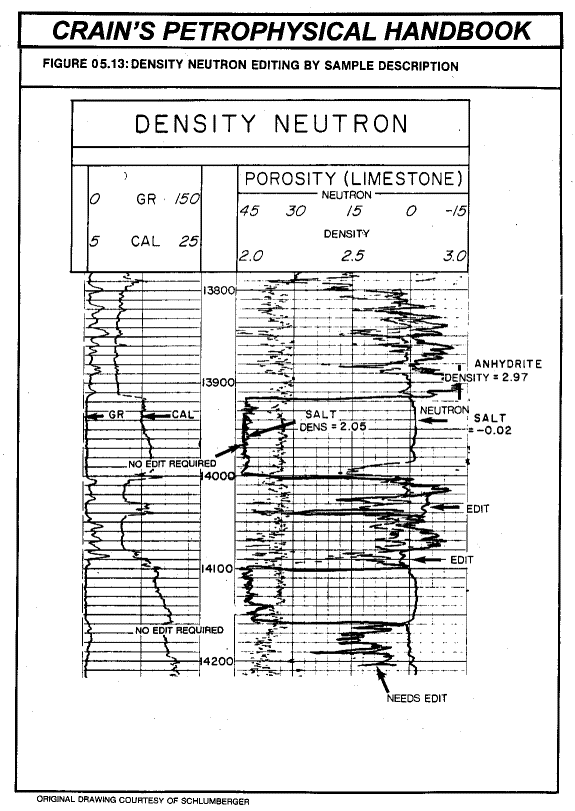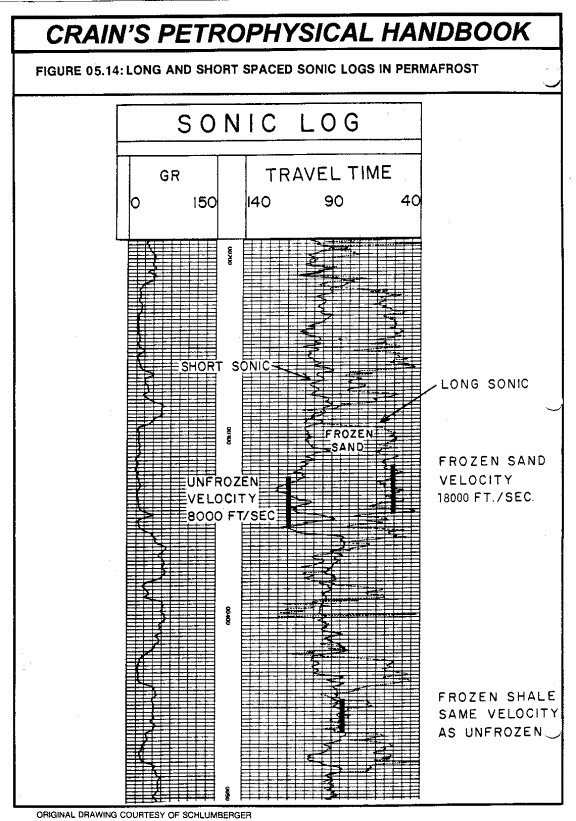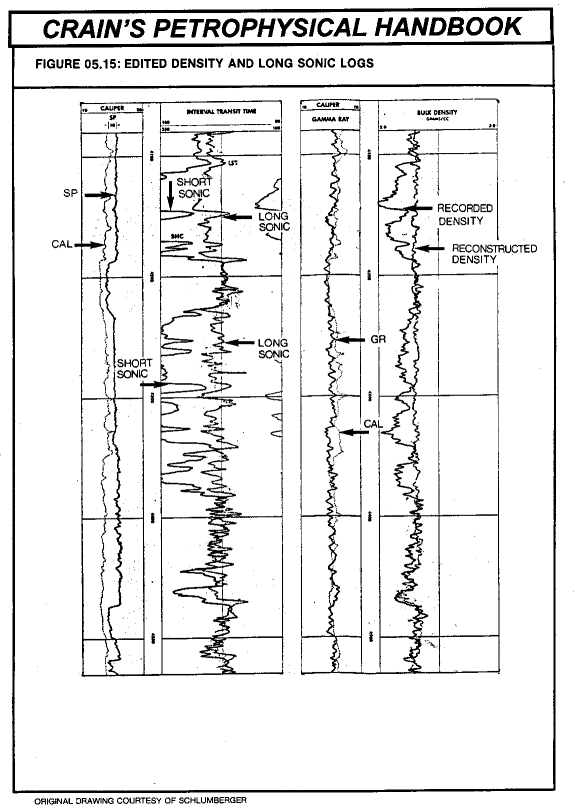|
 Rock Alteration
Rock Alteration
Most formations are altered when the borehole is drilled. More
competent formations show either an imperceptible or massive change,
while softer formations often suffer significant, obvious alterations.
Shales
are altered by exposure to mud filtrate, caving, eroding, absorbing
water and swelling. The degree of weathering is a function of
shale type and mud property, such as water loss, filtrate salinity
and weight. Exposure time and other mechanical factors involved
in drilling a hole are also of importance.
Sandstones
are altered by relaxation, which is a function of mud weight,
as well as erosion - a result of mud weight, water loss characteristics,
and bit hydraulics.
Carbonates
under stress, as found in overthrust zones, often implode into
the borehole, leaving a large, irregular hole which is difficult
to log accurately. An example is given
below.

Density Log in Rough Hole
Evaporites
often dissolve and leave a large hole which cannot be logged.

All
the above conditions can be minimized by proper attention to drilling
procedures and drilling mud control.
Reconstructing a log,
calculating from basic principles, using less affected data from the
same hole may be attempted. Such results are often used
for seismic modeling. In addition, reconstruction is also used
to create missing logs or portions of logs to assist
petrophysical analysis or geological correlation. There are
numerous methods for reconstruction described in further
Sections of this Chapter.
A
dramatic example of rock alteration is the thawing of permafrost, by
circulation of warm drilling mud, in frozen porous rocks in Northern
climates. A sample is shown below.

This
log clearly illustrates a severe case of rock alteration due to
permafrost. In shallow
or recent
sediments, the difference between long and short spaced
sonic may be quite marked. The longer
spacing is usually the better
log.
In
altered shales, a longer spaced sonic log, will often provide
better data for geophysical purposes and reservoir calculations.
Other sonic logs in the area can be edited using comparative data
between the long and short spaced sonic logs run in selected holes.
The log below is an example of rock alteration, showing a long and
short spaced sonic log in a badly weathered borehole. Here, the
density log has been reconstructed by calculating the log response
from the long spaced sonic data and other known properties of
the rock sequence.

An example of sonic and density
log reconstruction, showing before and after curves.
|

